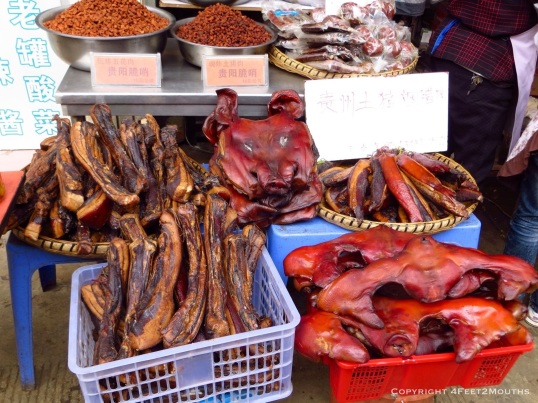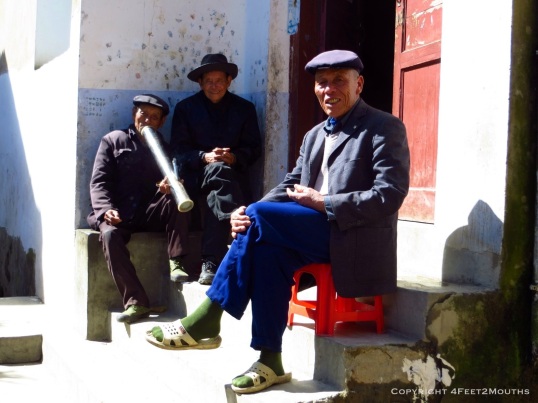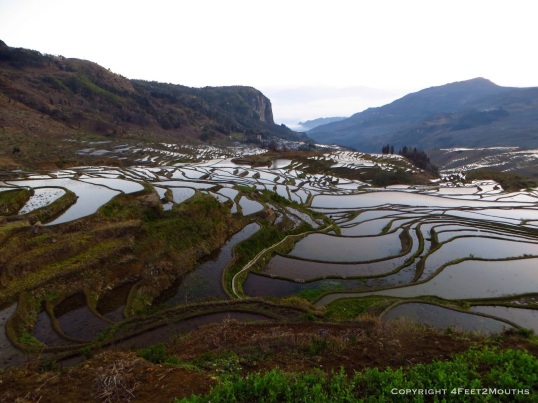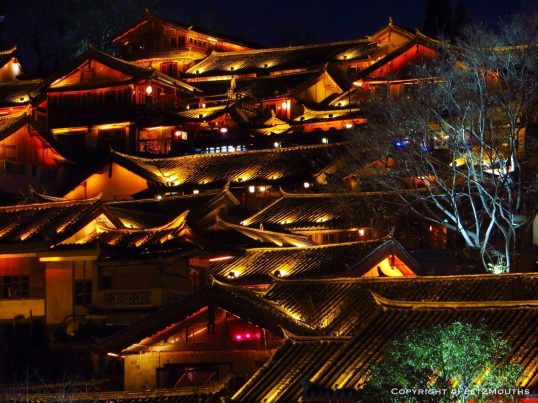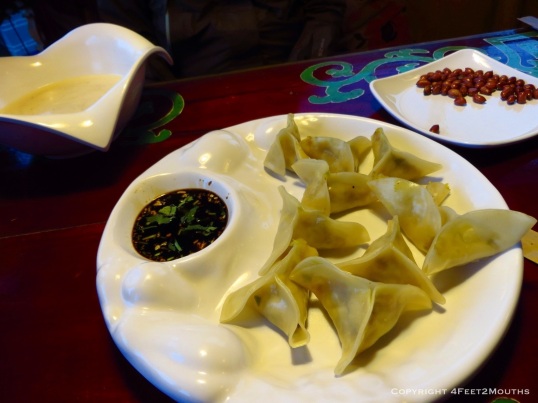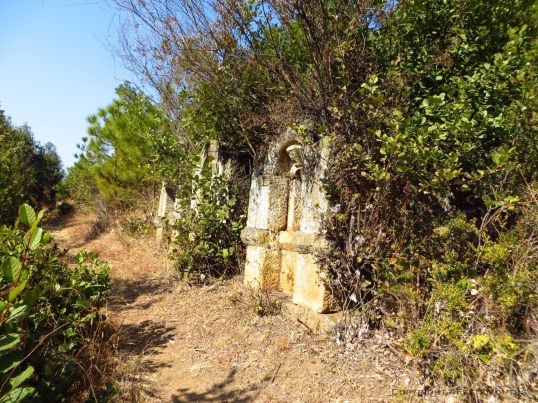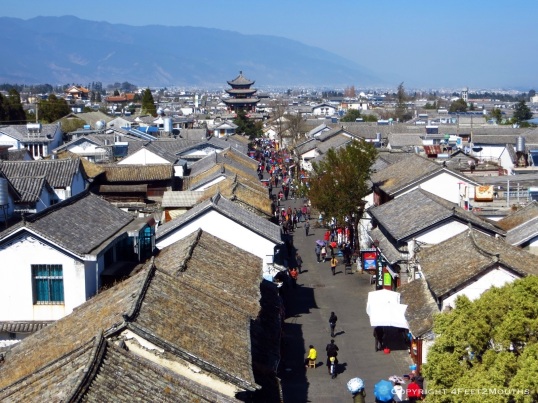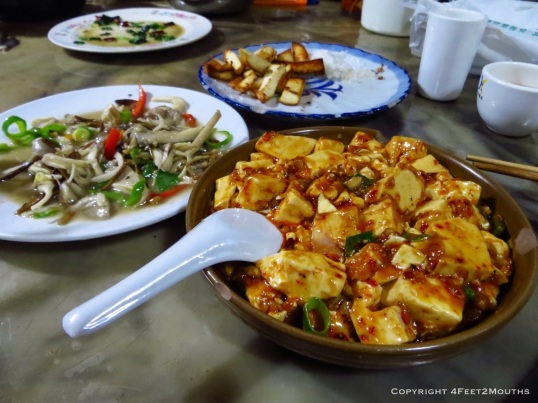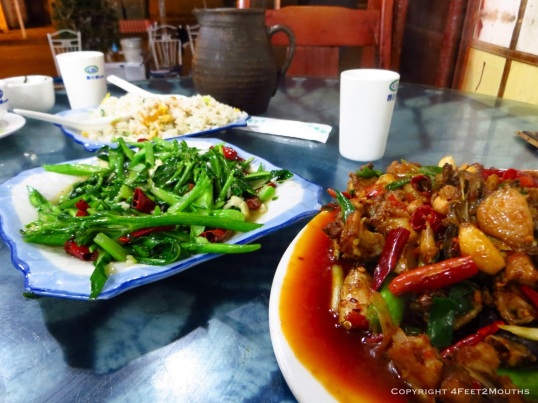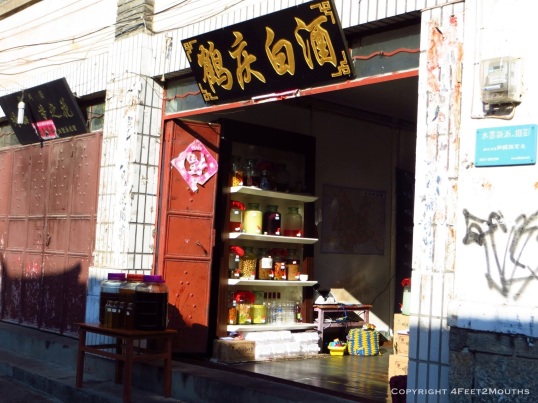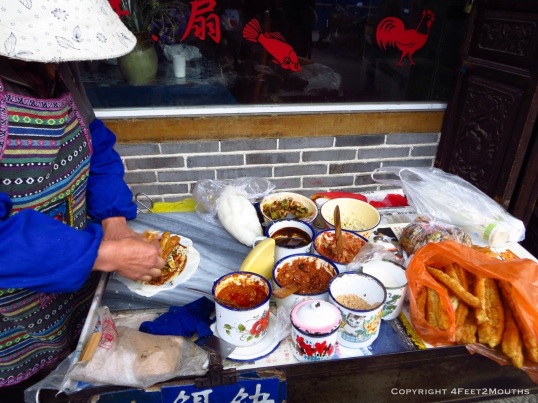
Mother nature’s craftsmanship: Tiger Leaping Gorge
What is it about canyons that can so intimately engage human kind? Observing the intricacies of the water-weathered terrain is like reviewing the life’s work of a master craftsmen. Each fluctuation in the landscape is a hard-earned blow of hammer and chisel, each contour sanded smooth and the landscape fiddled with over millions of years of geologic time. Tiger Leaping Gorge is one of the inspiring and beautiful masterpieces in this world. Enormous mountains jut vertically into the sky and the rather calm Yangtze River is transformed into a violent earth-carving tool. There is no better way to observe this type of landscape than walking; hiking the cliff’s edge is the best way to experience earth’s craftsmanship.

Cliff edge of Tiger Leaping Gorge
Finally we hiked Tiger Leaping Gorge! I have wanted to hike this stretch of canyon for four years now. We originally learned about it in a favorite travel book of ours called Lost On Planet China by J. Maarten Troost. After our first trip to China, we knew that we needed to spend some more time exploring this country. We needed more time to eat its delicious food and see the depths of natural and historic sights that there were on offer. Yunnan and Tiger Leaping Gorge remained a central element of our travel planning for this entire year abroad.

Hiking trail signage at beginning of trail

Turn right at ” This Small House”
We started the hike in Qiaotou after taking a early morning bus from Lijiang. We stopped at the one guesthouse in town, Jane’s, to drop off our excess luggage and we began the hike up the hillside. I had expected few or no signage, so it was nice to see the frequent yellow and blue arrows leading us from Jane’s to the trail. The one tricky spot came at about 2-3 km into the walk-at “this small house.”‘ Turn off the paved road and walk through the courtyard onto the marked dirt path.

The enormous entrance into Tiger Leaping Gorge

The rocky foot trail
We were immediately struck with an enormous depth and magnificence of the canyon. The steepness of the cliffs appeared near vertical and the sparsely snowcapped mountains were so high, but so close. The footpath was well worn, a couple feet wide, but very rocky and unmaintained.

Wall of corn

The tiny village with Naxi Guesthouse
We walked for another twenty minutes to Naxi Guesthouse for some lunch. The women were very nice and fixed us some simple and slightly bland Chinese food. We admired the wall of corn that dried in the sun and then we began our steep ascent up the mountainside. Late January has to be the perfect time to hike this trek. We had sunny weather around 15-20C (60-70F) and we saw almost no tourists. Off-season tourism in China is proving to be the way to travel.

Tree clinging onto the cliff
We reached the bottom of the infamous “28 bends” after already counting to ten. We had been climbing for seven kilometers but we determined that the real climb starts at a small building that sells drinks during high season. Carmen and I pushed on up through the switchbacks and we slowly but steadily climbed up the cliffside. For anyone who decides to count the bends, I recommend only counting full switchbacks that take at least five to ten minutes to cross. I was pleasantly surprised to reach the top with only counting 25. Both of us had actually expected a much more difficult and challenging ascent.

Self-portrait at top of 28 bends

Steep vertical cliffs carved by the Yangtze River
In total from Qiaotou the climb to this point was maybe 800m. The lookout point at top only met the elevation of slightly below the middle of the mountain across the canyon. We could not help but compare the climb and canyon with some of treks earlier this year. Colca Canyon in Peru is the worlds deepest canyon, but the mountains are very rounded so although the hiking was much more challenging, the landscape was not as drastic as the Chinese gorge in front of us. The Grand Canyon is unmatched for its beauty and hiking, in my opinion. Tiger Leaping Gorge has steep vertical mountains but the red Navajo sandstone and ease of do-it-yourself hiking in America is very rewarding.

Carmen hugging the pine needle mound
Every couple hours we would encounter a tiny village or a series of small plots of farmland. Carmen in particular enjoyed this tower of pine needles that looked so soft that she could hug it. Of course this type of thing always turns out more prickly than she could have expected.

Pipeline eyesore
They are building like crazy in China…everywhere. As we walked through each town we started noticing that every building had a brand new solar water heater on the roof, then we realized that some towns had ten to twenty buildings that were less than a year old. Even here on the steep cliffs of the Yangtze River, the Chinese are flocking to inhabit and make a living for themselves. Unfortunately this development does not care about the aesthetics of the landscape. This water pipeline was just one of many that snaked through the landscape. The placement of electric lines on the trail is also very discouraging as some awesome photo spots are plagued with droopy wires and decrepit leaning and fallen electric poles. Nevertheless, the scenery is beautiful and we just walked passed it in search of another awesome lookout and there were many places to enjoy the view.

View from the toilet

Our serene mountain getaway- Half Way Guesthouse

Stark peak of Jade Dragon Snow Mountain at 5600m high
Most specifically, the bathroom at our Half Way Guesthouse had one of the best views. Turning our heads just slightly mid-squat and we were faced with 4000m of glorious mountain across the river. Unfortunately we did not want to get too distracted and become unbalanced. Losing aim has bad consequences when hovering over a trough. There was an even better view from the dining hall and roof that looked unobstructed into the gorgeous gorge.

Carmen hiking at sunrise

Waterfall crossing along trail
We were comfortable exhausted after over 16km (10mi) of hiking. We grabbed an early dinner and drifted into deep rejuvenating sleep. We woke before sunrise to get a jump on the hike ahead of us. As the dawn light broke through the canyon we traversed the rocky path. There were a few waterfalls but they were not too challenging or wet for us to cross. After about 8km (5mi) we found ourselves in the tiny tourist town of Walnut Garden.

The gorge from sunshine trail
We passed the cool hours of the morning with some breakfast and tea. The sun was slowly finding its way into the canyon and it was not until about 10:30am that we felt there was enough sun to not freeze our butts off walking down into the depths of the gorge. We started from Sean’s Guesthouse and followed the “sunshine trail” deep into the canyon. After about forty-five minutes of walking a young girl offers to sell us some drinks and candy. We politely turned her down, then she insists on us paying a fee to use e trail that we just walked. We had expected this but it is still frustrating to pay a park entrance fee then again pay some tart that stands in middle of the trail. We haggle a bit and settle on 10¥ for Carmen and I to use the trail in only one-direction.

Be careful not to cross this
We walk around the corner and were stopped abruptly by a mean-looking bulldog-faced girl. Now, she has the same sign as the other girl, but she is charging for the “ladder trail photo spot.” We were planning on using this trail, but charging to take a photo is ridiculous. We knew that there was a toll booth at the top of the ladder trail that we suspected would also try to charge us. So I decided to step passed her. She jumps in front and growls and screams and starts pumping her tiny balled fist into her pudgy left hand. I found this display of violence comical and disgraceful. I paid a hefty tourist ticket to get in the park but it is not acceptable to bully tourists for more cash.
Then I noticed a brief moment when she was distracted, the wind fluttered, her phone beeped and in three steps I was passed her. I unleashed the dragon from the cage. She screamed, squealed and barked everything she could at me. The intensity of her anger sprayed heavily on my face with thick insults. Standing on her tippy toes she gripped my jacket as if she planned on throwing me to the other side of the mountain. I stayed calm, happy that I maintained composure in China. I look at Carmen and I see one of those faces that immediately humbles me and sets me on track. I see a face that says, “What are you doing? Now I am fucking trapped over here while you and that crazy bitch are arguing over $3.25!” I convince Broozie Lee to stop pumping her fists and we pay the full toll (or maybe I got across from free and Carmen paid double). Looking back at it, this incident reflects the challenges of a miscommunication. If I knew I would not get charged at the top for the same trail, or if I knew that they actually maintained the trail (which turned out to be clean, safe and well-maintained) then maybe this would have been smoother.

Tourist rock on the Yangtze River near Tiger Leaping Rock
Another five minutes and we were on the main tourist viewing spot, Tiger Leaping Rock. The legend has it that a magnificent tiger fled human hunters by traversing the steep mountains. The hunters encroached on the tiger and cornered up him against the Yangtze River. The tight canyon confined the river into a raging pulsing body of rapids and waterfalls. The panic-stricken tiger paced on the last remaining landform expecting his inevitable death. As the hunters encroached down the hillside the tiger leapt in desperation. The river raged below, but gloriously, the tiger flew over the tumultuous water and landed gracefully on the river bank. The distance was too great for the hunters. The tiger swiftly climbed and disappeared into the mountains. The people and the place were forever changed with the memory of the tiger and the remaining Tiger Leaping Rock.

Yangtze Rapids
We sat on one of the rocks and admired the river as the water violently slammed against the rocks causing one of the most abusive rapids I could ever imagine. We were forced to yell across the thundering sound. There are a handful of places to visit at the water, but many of them require bribing this one family for each photo. I think the best spot is the free on e at the end of the trail. The mountains ascend almost vertically from the water’s edge and the Yangtze snakes in the the distance.

Ladder trail up from Tiger Leaping Rock
We climbed out of the canyon to discover that the ladder trail had significantly more elevation gain and was more challenging (exposed in the sun) than the 28 bends. There actually is a sixty foot ladder (optional for those that trust Chinese safety standards). We huffed and puffed our way to the top excited to have completed a wonderful Tiger Leaping Gorge trek. The scenery throughout our two days was magical. It is impressive how for just a short distance these mountains confine the river to create a drastic and impressive landscape. It is possible to look in both directions to see the mountains and canyon disappear, the Yangtze flattens and resumes a gentle flow across the landscape. Back at the cliff’s edge, the river no longer takes on the characteristics of thrashing through the canyon. The whitewater softly meanders through Tiger Leaping Gorge slowly carving and chiseling it more elegantly than ever before.







